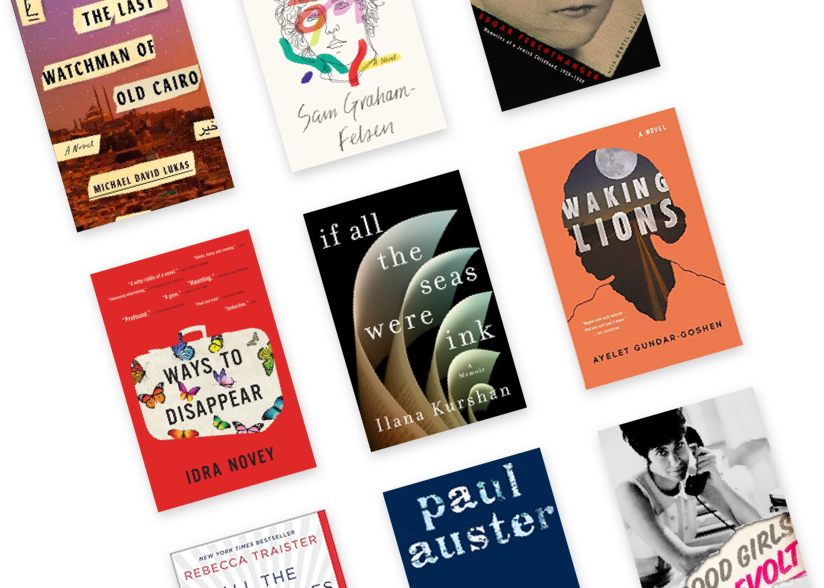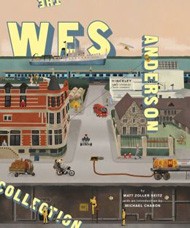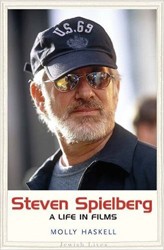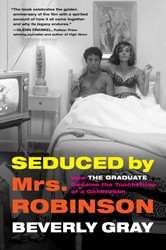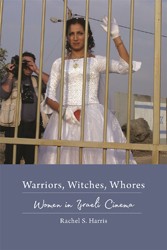Toward the beginning of Chai Noon: Jews and the Cinematic Wild West, Jonathan L. Friedmann’s original and insightful survey of Jewish Westerns, Friedmann quotes literary critic Leslie Fiedler, who in the 1970s wrote that “the notion of the Jewish cowboy is utterly ridiculous.” As Friedmann explains, Fielder’s comment was undoubtedly rooted in a variety of factors, among them self-censorship on the part of early Hollywood creators looking to avoid antisemitism by suppressing Jewish content; tropes that “othered” Jews and relegated them to “the margins of the [Western] mythos”; and stereotypes that both diminished Jewish masculinity and, in an ahistorical flattening of the American Jewish story, overlooked the existence of American Jews outside New York. Chai Noon is, in part, a book that seeks to debunk the notions that Jews and cowboys are antithetical figures, and that Jews have not had a role to play in Hollywood’s mythmaking of the American West.
The end result is a comprehensive, if somewhat fragmented, survey of the role that Jews have played in cinematic representations of the American West: as stereotypical peddlers, weaklings, and “others” who serve to further emphasize the “Americanness” of the cowboy protagonists; as behind-the-scenes harbingers of Western mythology in classical Hollywood renderings; and, perhaps most interestingly, as creators aimed at deconstructing that very same mythos, whether through alternative genres (such as comedy), alternative settings, or alternative heroes.
Chai Noon takes its reader through the various stages of the Western genre in American popular culture, starting with the “Yiddish cowboys and Hebrew Indians” of pre-Hollywood vaudeville stages and silent films; going through case studies of pre-Code, Code-era, post-Code, and television Westerns; and ending with comedic and revisionist Westerns that turn the genre on its head, usually with more explicitly Jewish content.
What Friedmann does particularly well is guide the reader through what makes a Western. The Western, as Friedmann argues, is a hybrid, inherently flexible genre that has been adapted again and again to reflect the cultural moment in which it is made. The examples included in the book — from classic Western movies like Cimarron (1931) and The Searchers (1956) to TV Westerns like Bonanza (1959−1973), Little House on the Prairie (1974−1983), and Deadwood (2004−2006) to genre-bending comedic/musical Westerns like An American Tail: Fievel Goes West (1991) and City Slickers (1991) — present a pastiche of how the Western has evolved over the course of the twentieth century. Beginning as a straightforward us-versus-them depiction of American exceptionalism and, in many cases, white supremacy, it became, according to an argument by Frederick Jackson Turner, a genre that dissolved ethnic, religious, and socioeconomic differences “into a utopian crucible of democracy, cooperation, and settler-colonial exceptionalism.”
What is slightly less clear is how many of the Westerns covered in Chai Noon can be interpreted as “Jewish.” As Friedmann explains, Jewish representation — especially in a genre as stereotypically “non-Jewish” as the Western — is not always explicit, nor is it always nuanced. And, sometimes, as with many of the case studies included in Chai Noon, it is not clear how the “Jewish” content Friedmann mines helps to add anything new to the conversation about how American popular culture treats Jews, or what it means to depict Jewishness and Judaism to mainstream American audiences. The case studies are often short — something that is necessary in a volume that attempts to provide a comprehensive study of Jewish Westerns, but can be confusing when not enough context is provided.
Chai Noon’s strongest case studies are those that offer both genre-bending addendums to classical Western tropes and strong Jewish sensibilities that drive the ethos and pathos of their narratives. Friedmann’s analyses of Mel Brooks’ 1974 masterpiece Blazing Saddles and Robert Aldrich’s 1979 comedy The Frisco Kid, both of which star Gene Wilder, are particularly worthwhile. Blazing Saddles centers on the exploits of a Black sheriff (Cleavon Little) and a Jewish-coded deputy (Wilder) who save a small town of bigoted Western settlers. Friedmann shows that the film deconstructs the myth of the American West as a haven of white American supremacy and expands the definitions of who can be an American cowboy and what ideal American masculinity looks like. The Frisco Kid carries the project of Blazing Saddles even further, making Wilder’s character a Polish Jewish rabbi traveling from Philadelphia to San Francisco and, in turn, imbuing the film with ruminations on what it means to be Jewish and, perhaps even more importantly, with a historically accurate depiction of the nineteenth-century frontier as a “multiethnic landscape populated by Mexicans, Chinese, Blacks, and Europeans of different backgrounds” including, of course, Jews.
Friedmann’s book ultimately provides insight into a topic previously understudied and underappreciated in American Jewish film studies and, in doing so, suggests that, perhaps, the mythical American West is big enough for all of us.

